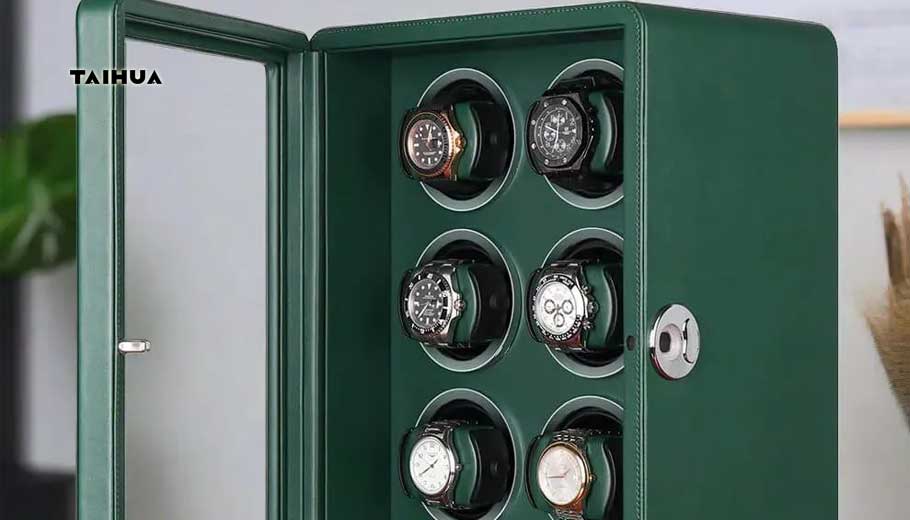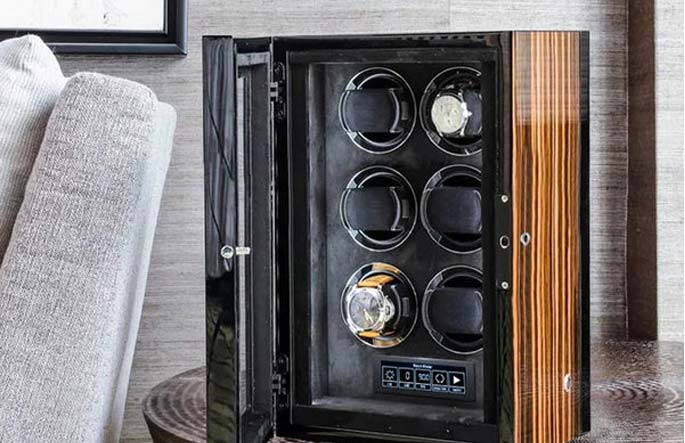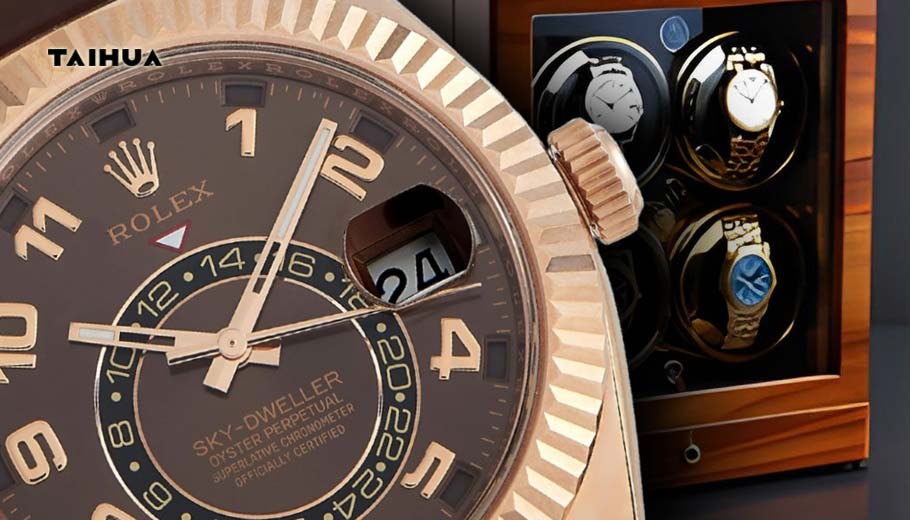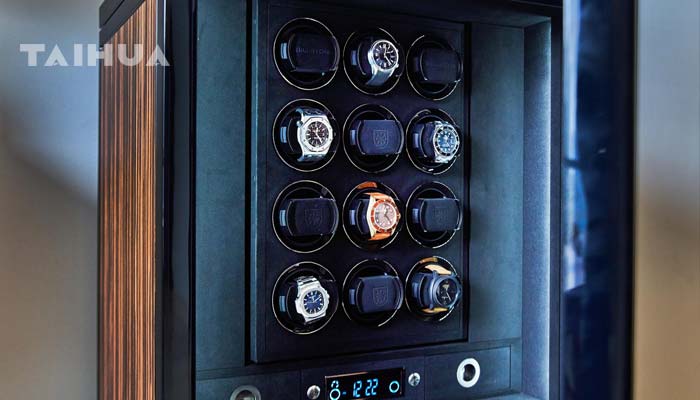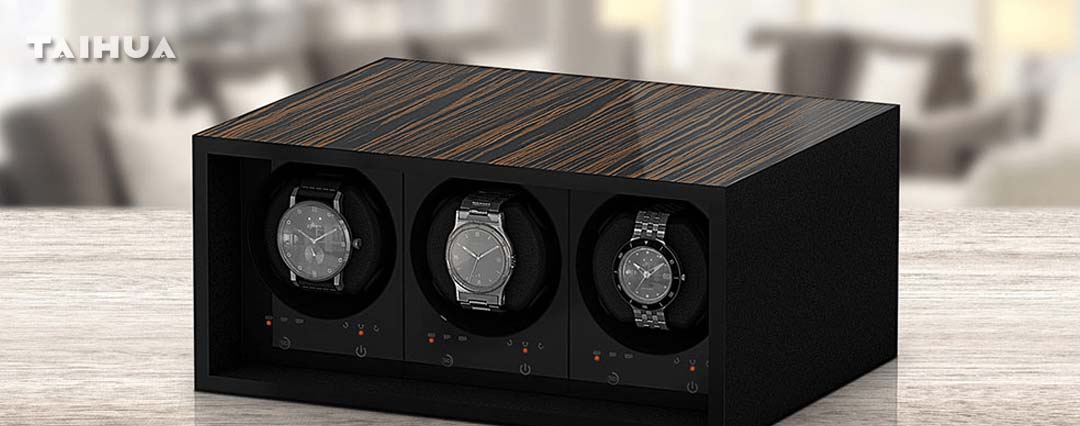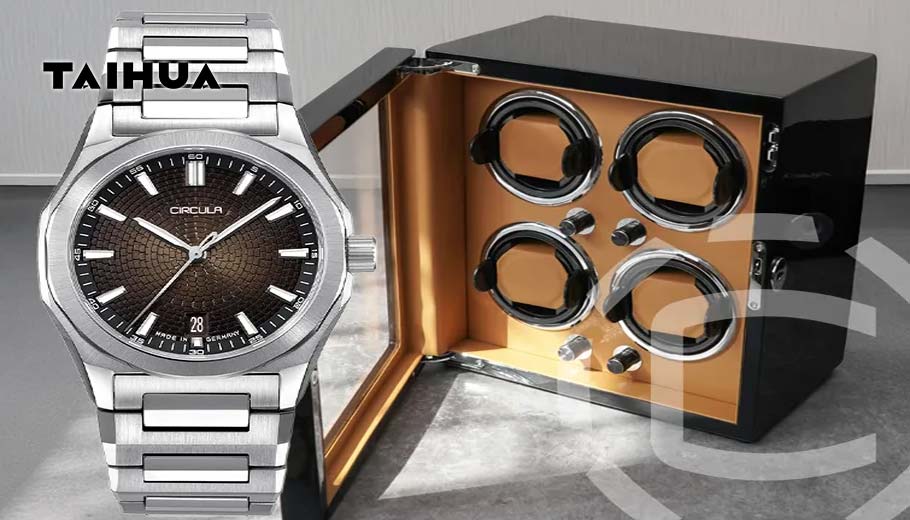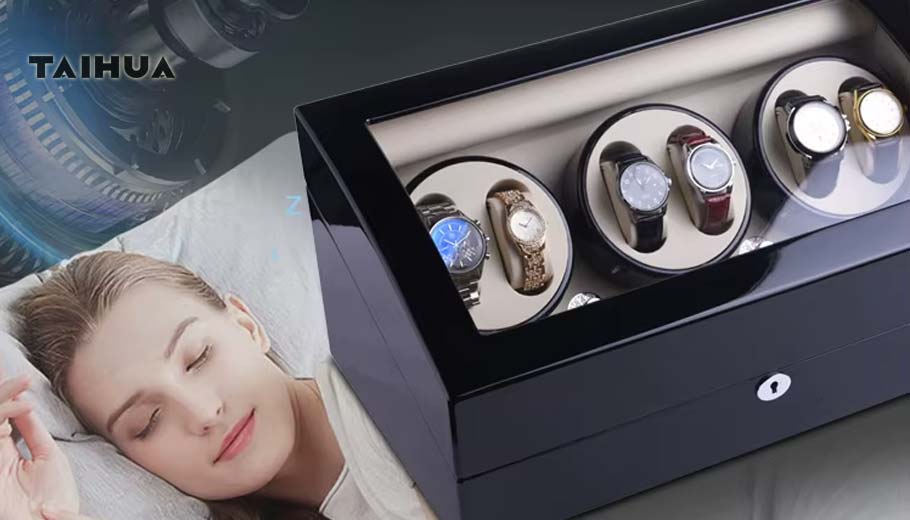An automatic watch winder works by gently rotating an automatic watch to simulate the natural motion of the wrist, which keeps the watch's mainspring wound and the watch running when not being worn. Inside an automatic watch, a rotor spins with wrist movement, winding the mainspring that powers the watch. When the watch is off the wrist, the winder mimics this motion by rotating the watch on a platform or in a drum, thus spinning the rotor to keep the mainspring charged.
The winder usually has an electric or battery-powered motor that drives the rotation. It can have customizable settings for rotation direction (clockwise, counterclockwise, or bidirectional) and turns per day (TPD), allowing the user to match the winder's motion to the specific requirements of their watch.
Because most automatic watches have a power reserve of between 36 to 72 hours, the winder helps maintain the watch's energy so it does not stop. This is especially useful to keep watches with complicated features (e.g., perpetual calendars or moon phases) accurate without having to reset them after they have stopped.
The winding mechanism inside the watch has a release system to prevent overwinding, so using a winder with appropriate settings will not damage the watch. The winder rotates the watch intermittently rather than constantly, mimicking natural wrist movement to reduce unnecessary wear.
In summary:
-
The watch winder simulates wrist motion by rotating the watch.
-
This rotation spins the internal rotor in the watch.
-
The spinning rotor winds the mainspring, keeping the watch powered.
-
Adjustable settings allow customization of rotation direction and frequency.
-
Prevents the watch from stopping when not worn for extended periods.
-
Protects complex watch functions from needing constant resetting.
This device is primarily for automatic watches and is not necessary for manual-wind or quartz watches

